climate change refugee
description: people forced to leave their home region due to the global warming changing their local environment
16 results

Radicals Chasing Utopia: Inside the Rogue Movements Trying to Change the World
by
Jamie Bartlett
Published 12 Jun 2017
If temperatures continue to increase, the overall net effects will be catastrophic.2 Based on current projections, by the end of this century the sea could be three feet higher. Large swathes of the globe will become uninhabitable. Extreme weather will be commonplace, as will food shortages and drought. Thousands of animal and plant species will become extinct. By 2050 as many as 250 million people could be climate-change refugees.3 According to Nature magazine, we’re rushing toward some awful mass extinction by 2200.4 While unanimous consensus is impossible, the vast majority of scientists agree we need to quickly limit the amount of fossil fuels we burn.* And although there has been progress—including an estimated $2 trillion invested in clean energy since 2004, and a recent slowdown in the growth of greenhouse gas emissions—every year brings more bad news.5 In 2015 we destroyed 20 million acres of tropical rainforest, which reduces the earth’s ability to absorb carbon dioxide and produce oxygen.
…
More people had turned up to an industrial park in rainy Birmingham three months earlier to listen to Tommy Robinson tell us—once again—that he didn’t want the United Kingdom run by Islamic fundamentalists. And he was slightly disappointed by the low turnout. As we trudged closer to the ridge of the hill, I was thinking about those statistics: three feet higher, 250 million climate-change refugees, and ‘mass extinction’. Why aren’t there more of us? All radical groups ask themselves how to go from a small band of motivated believers to one that millions of people get behind. But it’s most acute for the direct-action climate activists because climate change is a uniquely awkward problem.
…
When everything in our house, our car and our workplace is connected to the internet, all collected, stored and used by mega-companies based in California? Or if, as predicted by the United Nations, by 2050 the population hits 10 billion, half of them facing extreme water shortages, and 250 million climate-change refugees are on the move looking for habitable places to live?4 If, as a growing number of scientists now believe, breakthroughs in gerontology mean life expectancy will significantly extend within a generation? Or when, within the next couple of decades, health services and pension plans become financially unsustainable, requiring dramatic tax increases, just as more and more people start using untraceable cryptocurrencies?

Border and Rule: Global Migration, Capitalism, and the Rise of Racist Nationalism
by
Harsha Walia
Published 9 Feb 2021
Weston Phippen, “Australia’s Controversial Migration Policy,” The Atlantic, April 29, 2016, www.theatlantic.com/international/archive/2016/04/australia-immigration/480189/. 43.Refugee Council of Australia, “Offshore Processing Statistics,” October 27, 2019, www.refugeecouncil.org.au/operation-sovereign-borders-offshore-detention-statistics/2/. 44.Amy Nethery and Carly Gordyn, “Australia-Indonesia Cooperation on Asylum-Seekers: A Case of ‘Incentivised Policy Transfer’,” Australian Journal of International Affairs 68, no. 2 (2014): 177-93. 45.John Podesta, “The Climate Crisis, Migration, and Refugees,” Brookings, July 25, 2019, www.brookings.edu/research/the-climate-crisis-migration-and-refugees/. 46.“Defence Chief Sounds Warning on Surge of Climate Change Refugees,” SBS News, July 15, 2019, www.sbs.com.au/news/defence-chief-sounds-warning-on-surge-of-climate-change-refugees. 47.UN High Commissioner for Refugees, “UNHCR Chief Filippo Grandi Calls On Australia to End Harmful Practice of Offshore Processing,” July 24, 2017, www.unhcr.org/en-au/news/press/2017/7/597217484/unhcr-chief-filippo-grandi-calls-australia-end-harmful-practice-offshore.html. 48.Wazana, “Fear and Loathing,” 83-95. 49.Jo Chandler, “‘Designed to Torture’: Asylum Seeker Chooses Iranian Prison over PNG Detention Centre, Guardian, November 10, 2019, www.theguardian.com/world/2019/nov/10/designed-to-torture-asylum-seeker-chooses-iranian-prison-over-png-detention-centre. 50.Refugee Council of Australia, “Offshore Processing Statistics.” 51.Mark Isaacs, “There’s No Escape from Australia’s Refugee Gulag,” Foreign Policy, April 30, 2018, https://foreignpolicy.com/2018/04/30/theres-no-escape-from-australias-refugee-gulag/.
…
Torelli, “Climate-Driven Migration in Africa,” European Council on Foreign Relations, December 20, 2017, www.ecfr.eu/article/commentary_climate_driven_migration_in_africa; Food and Agriculture Organization of the United Nations, “The Magnitude of the Problem,” www.fao.org/3/X5318E/x5318e02.htm; Robert Muggah and José Luengo Cabrera, “The Sahel Is Engulfed by Violence,” World Economic Forum, January 23, 2019, www.weforum.org/agenda/2019/01/all-the-warning-signs-are-showing-in-the-sahel-we-must-act-now/. 79.Tim McDonnell, “The Refugees the World Barely Pays Attention To,” NPR, June 20, 2018, www.npr.org/sections/goatsandsoda/2018/06/20/621782275/the-refugees-that-the-world-barely-pays-attention-to. 80.Ioane Teitiota quoted in Tim McDonald, “The Man Who Would Be the First Climate Change Refugee,” BBC News, November 5, 2015, www.bbc.com/news/world-asia-34674374. Chapter 4 1.Perla Trevizo, “Tribes Seek to Join Immigration Reform Debate,” Arizona Daily Star, June 14, 2013, https://tucson.com/news/local/border/tribes-seek-to-join-immigration-reform-debate/article_d4fe1980-46d4-5e90-b690-ce78c5453bf1.html. 2.Michael Dear, Why Walls Won’t Work: Repairing the US–Mexico Divide (New York: Oxford University Press, 2013), 158. 3.Will Parish, “The U.S.

Open: The Progressive Case for Free Trade, Immigration, and Global Capital
by
Kimberly Clausing
Published 4 Mar 2019
We will also have fewer patriotic, hardworking new Americans grateful for their improved living standards. And the demographic pressures of our aging population will weigh more heavily as birthrates and population growth slow. A retreat from globalization also risks pitting nations against each other, making it more difficult to solve the problems that face humanity, such as climate change, refugees, world poverty, and international security. After World War II, world leaders worked to learn the lessons of two world wars and the Great Depression. They fostered international institutions like the IMF, the World Bank, and an International Trade Organization to bring the world together, working toward peace and prosperity.4 These institutions set up an international trading system, an international financial system, and an international funding source for reconstruction and development.
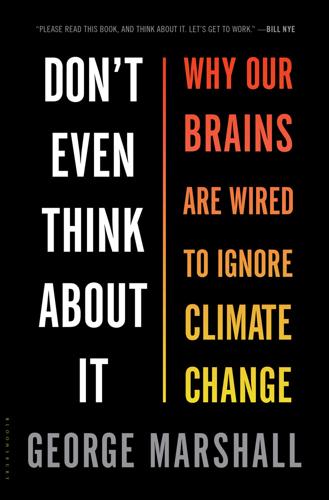
Don't Even Think About It: Why Our Brains Are Wired to Ignore Climate Change
by
George Marshall
Published 18 Aug 2014
It consistently received less than five mentions on the websites of many other leading progressive organizations—Physicians for Human Rights, the AFL-CIO, Oxfam America, CARE, World Vision, and the YWCA among them. By way of comparison, I searched for two control terms that had no reason at all for being on these groups’ websites: “donkey” and “ice cream.” On each site, these irrelevant terms appeared far more often. Human Rights Watch mentioned donkeys four times more often than climate change. Refugees International mentioned ice cream nearly eight times more. My interviews with decision makers in these organizations confirmed that they had deliberately framed climate change as being outside their norms of attention because they were unsure how they could intervene, had no capacity for uncertain emerging problems, and had decided that it was an environmental problem and therefore outside their mission.
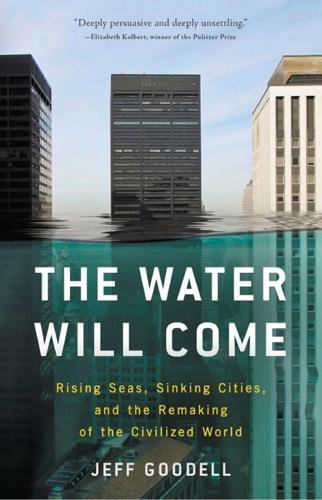
The Water Will Come: Rising Seas, Sinking Cities, and the Remaking of the Civilized World
by
Jeff Goodell
Published 23 Oct 2017
“Besieged by the Rising Tides of Climate Change, Kiribati Buys Land in Fiji.” The Guardian, June 30, 2014. 25. “Fiji will not turn…”: Shalveen Chand. “Kiribati’s Hope for Land.” Fiji Times, February 14, 2014. 26. “You can drastically…”: Quoted in Michael Gerrard. “America Is the Worst Polluter in the History of the World. We Should Let Climate Change Refugees Resettle Here.” Washington Post, June 25, 2015. 27. Gerrard argues: Ibid. 28. Runit Dome: Michael Gerrard. “A Pacific Isle, Radioactive and Forgotten.” New York Times, December 3, 2014. Chapter 9 1. $250 million: “On the Front Lines of Rising Seas: Naval Station Norfolk, Virginia.” Fact sheet, Union of Concerned Scientists.
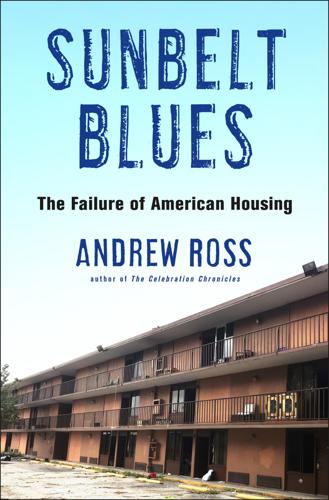
Sunbelt Blues: The Failure of American Housing
by
Andrew Ross
Published 25 Oct 2021
But the river itself is under threat from climate change, as rising seas push salt water further upstream and inland.26 Saltwater intrusion is more difficult to predict than sea rise, and a prolonged drought (such as those that plagued the region in the 1990s and 2000s), or simply an overdraft of water for urban supply, could hasten its advance. It is by no means certain that the water supply of North Ranch will be secure by the end of the century, when its build-out is projected to be complete. Even if it is not a perfect sanctuary, North Ranch might still serve as a destination for Floridians displaced by climate change. Refugees, wherever they are, seldom move very far from their homes, even when the odds on their return are low. Affluent residents of South Florida’s threatened coastlines are already migrating to higher ground, where, historically, African Americans were consigned, through redlining and other kinds of racial zoning.27 The displacement of minority and lower-income residents from Miami neighborhoods like Little Haiti, Overtown, Liberty City, and Little Havana is well underway, as part of a pattern that has been termed “climate gentrification.”28 But relocating within the city will not be enough: sea levels for Miami-Dade County are projected to rise as much as seventeen inches by 2040 and fifty-four inches by 2070.29 Most estimates see the entire coastal urbanized area underwater by the end of the century.

The Human Age: The World Shaped by Us
by
Diane Ackerman
Published 9 Sep 2014
Any day now the whole village and many neighboring indigenous communities will sink into the melting permafrost, as if it were white quicksand, to join the realm of polar bears and narwhals in the rich seams of Eskimo lore. By 2017, if the U.S. Army Corps of Engineers’ predictions are right, numerous native villages along the northwestern coast and barrier islands will be in the same fix. As America’s first climate-change refugees, the Yup’ik have appealed to the state and federal government for help, but, according to international law, people only qualify as refugees if they’re fleeing violence, war, or persecution. And federal disaster relief laws only grant money to repair infrastructure and damage in place, not to help with relocation after slow-motion disaster.

The Weather Makers: How Man Is Changing the Climate and What It Means for Life on Earth
by
Tim Flannery
Published 10 Jan 2001
The Alaskan village of Shishmaref is becoming uninhabitable due to rising temperatures that are reducing sea ice and thawing permafrost, making the shoreline vulnerable to erosion.2 Hundreds of square metres of land and over a dozen houses have already been lost to the sea, and there are plans to relocate the whole town—at a cost of over $100,000 per resident.3 Shishmaref’s plight is particularly poignant. Its population is only 600 strong, but it has persisted at least 4000 years, and its inhabitants look set to become the first climate change refugees. Where they will go remains uncertain, for as they see it: the Arctic is becoming an environment at risk in the sense that sea ice is less stable, unusual weather patterns are occurring, vegetation cover is changing, and particular animals are no longer found in traditional hunting areas during specific seasons.
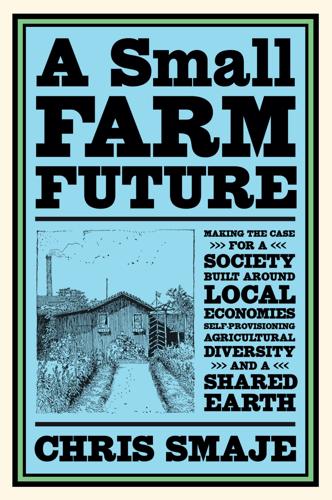
A Small Farm Future: Making the Case for a Society Built Around Local Economies, Self-Provisioning, Agricultural Diversity and a Shared Earth
by
Chris Smaje
Published 14 Aug 2020
And it’s hard to reimagine a local agriculture in this way with global data, or even for large single countries with multiple biomes such as the United States. The danger is that the results are unrepresentative of wider global trends, but I’d argue the British case isn’t so unrepresentative. I model for a considerably larger population than currently exists on the assumption that Britain will be hosting climate change refugees in multitudes, in a country that’s already quite densely populated (currently it’s ranked 128th out of 209 countries in per capita farmland availability75). And although Britain has some high-quality agricultural land with good grain yields, it’s also a high-latitude country with relatively challenging seasonality and a lot of low-quality grassland in its agricultural makeup.
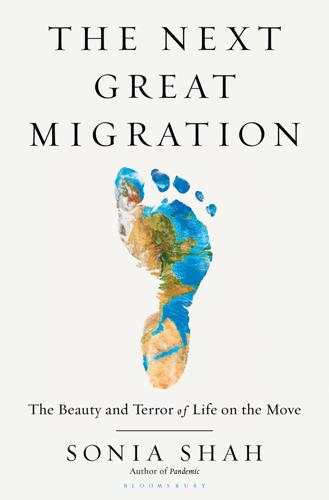
The Next Great Migration: The Beauty and Terror of Life on the Move
by
Sonia Shah
during periods of opportunity, not crisis Axel Timmermann and Tobias Friedrich, “Late Pleistocene Climate Drivers of Early Human Migration,” Nature 538, no. 7623 (2016): 92. only New Zealand has considered the idea Charlotte Edmond, “5 Places Relocating People Because of Climate Change,” World Economic Forum, June 29, 2017; Charles Anderson, “New Zealand Considers Creating Climate Change Refugee Visas,” Guardian, October 31, 2017. do not qualify Karen Musalo, “Systematic Plan to Narrow Humanitarian Protection: A New Era of US Asylum Policy,” 15th Annual Immigration Law and Policy Conference, Georgetown University Law Center, Washington, D.C., October 1, 2018. They’d be sent back Lauren Carasik, “Trump’s Safe Third Country Agreement with Guatemala Is a Lie,” Foreign Policy, July 30, 2019.
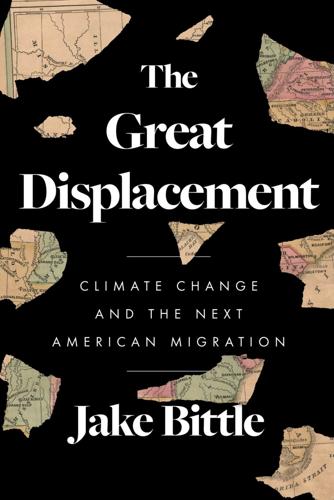
The Great Displacement: Climate Change and the Next American Migration
by
Jake Bittle
Published 21 Feb 2023
The United Nations has already affirmed the inalienable rights of climate refugees to social and economic stability, whether they are displaced within their own countries or across national borders. The body’s high court ruled in 2020 on the case of Ioane Teitiota, a man from the sinking island nation of Kiribati who had applied for asylum in New Zealand, and found that climate change refugees cannot be returned to their country of origin; its earlier compact on refugees has affirmed the rights of internal and international migrants to shelter and dignity. As with most United Nations decisions, this ruling only has force to the extent that countries choose to follow it, and so far few countries have, but the outline for a more humane framework already exists.
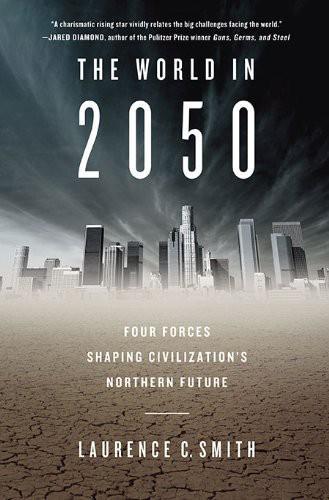
The World in 2050: Four Forces Shaping Civilization's Northern Future
by
Laurence C. Smith
Published 22 Sep 2010
It means faster shoreline erosion from pounding by the waves and storms of the open ocean. The Alaskan village of Shishmaref has lost this battle and will need to be relocated farther inland. But even in coastal towns, nearly everyone I meet bristles at the notion of being cast as a hapless climate-change refugee. Even as they express frustration at having their lives damaged by people living thousands of miles away—and think it only fair that those damages be repatriated—they also point to their long history of adaptation and resilience in one of the world’s most extreme environments. They are not sitting around idly in despair, or gazing forlornly out at the unfamiliar sea.
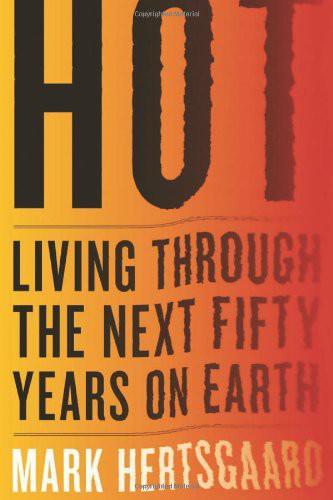
Hot: Living Through the Next Fifty Years on Earth
by
Mark Hertsgaard
Published 15 Jan 2011
Partly as a result, commodity prices were now soaring the world over, spreading hunger and sparking food riots that in turn threatened political stability. The secretary-general said he was especially concerned about the migrations all of this extreme weather had triggered. Calling the millions of people on the move "climate change refugees," he said they presented a huge humanitarian challenge. They also threatened international security, he said, a diplomat's way of warning that they could cause wars—for example, by crossing borders of nations that did not welcome them. Suddenly, the year 2015 seemed very close—so close that I found myself hoping that the war game organizers had exaggerated the dangers for dramatic effect.

Imaginable: How to See the Future Coming and Feel Ready for Anything―Even Things That Seem Impossible Today
by
Jane McGonigal
Published 22 Mar 2022
Holland, “Poll: Millennials More Open to Idea of Slavery Reparations,” AP News, May 11, 2016, https://apnews.com/article/b183a022831d4748963fc8807c204b08; Alec Tyson, Brian Kennedy, and Cary Funk, “Gen Z, Millennials Stand Out for Climate Change Activism, Social Media Engagement with Issue,” Pew Research Center, May 26, 2021, https://www.pewresearch.org/science/2021/05/26/gen-z-millennials-stand-out-for-climate-change-activism-social-media-engagement-with-issue/. 6 Qi Zhao et al., “Global, Regional, and National Burden of Mortality Associated with Non-Optimal Ambient Temperatures from 2000 to 2019: A Three-Stage Modelling Study,” Lancet Planetary Health 5, no. 7 (July 2021): e415–e425, https://doi.org/10.1016/S2542-5196(21)00081-4. 7 “Open Borders: The Case,” Open Borders, accessed August 27, 2021, https://openborders.info/; Zoey Poll, “The Case for Open Borders.” New Yorker, February 20, 2020, https://www.newyorker.com/culture/annals-of-inquiry/the-case-for-open-borders; Ben Ehrenreich, “Open Borders Must Be Part of Any Response to the Climate Crisis,” Nation, June 6, 2019, https://www.thenation.com/article/archive/climate-change-refugees-open-borders/. 8 Adrian Raftery, “The Dip in the US Birthrate Isn’t a Crisis, but the Fall in Immigration May Be,” Conversation, June 21, 2021, https://theconversation.com/the-dip-in-the-us-birthrate-isnt-a-crisis-but-the-fall-in-immigration-may-be-161169; Damien Cave, Emma Bubola, and Choe Sang-Hun, “Long Slide Looms for World Population, with Sweeping Ramifications,” New York Times, May 22, 2021, https://www.nytimes.com/2021/05/22/world/global-population-shrinking.html. 9 “Why 100 Million?
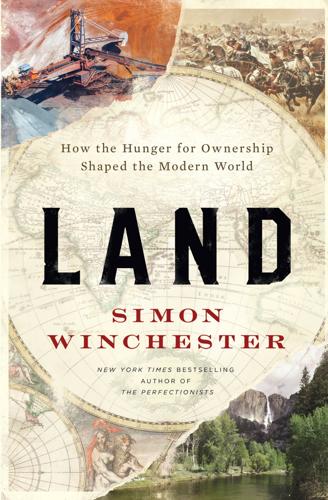
Land: How the Hunger for Ownership Shaped the Modern World
by
Simon Winchester
Published 19 Jan 2021
Coastlines will be nibbled away, not gnawed at greedily. Big cities farther inland—Kolkata, Dhaka, Nanjing, Rangoon, Lima—will, if reluctantly, receive most of the nearby displaced. New Zealand is alive to the local problem and has said formally that it will accept some Pacific Islanders as climate-change refugees. Other countries may follow suit. It will be some long while before the 37 billion acres of the world are diminished by any serious fraction. It will be very many decades at least before as much as a single billion acres, for instance, could be thought of as being at immediate risk of loss.
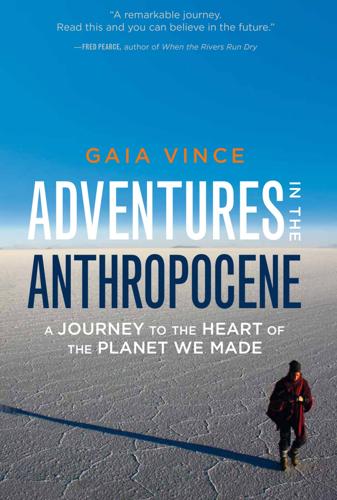
Adventures in the Anthropocene: A Journey to the Heart of the Planet We Made
by
Gaia Vince
Published 19 Oct 2014
There is a small cluster of low, unheated stone hovels clinging to the mountainside and between them is the low dark entrance, stained black with llama blood, remnant of a sacrifice to the Tio (the Devil) made a couple of weeks ago. Miners are extremely superstitious creatures, the reality of their predicament making them desperate for hope of supernatural help. In the sunny outside, they are fervent Catholics; once in the underworld, it is the Tio who holds them in his hands. It is here that most of the climate-change refugees from Bolivia’s villages end up – making a pact with the Devil that few will survive. I’ve come to see what happens to these people once drought kills their crops and forces them from their country farms and homes – and it’s not pretty. At over 4,000 metres, dilapidated, poverty-stricken Potosí is one of the world’s highest cities but it is overshadowed by the rainbow-coloured Cerro Rico (Rich Hill), which looms above the citizens – an imposing reminder of the cause of the city’s splendour and horror.